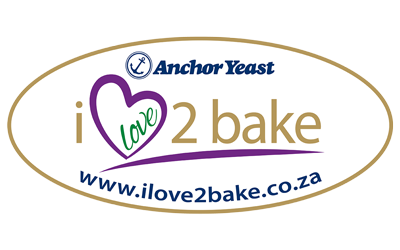Here are the common terms you will come across when baking with Yeast:
Proof: Yeast is alive and needs to be awakened from its resting state. Proofing allows the dough to rise before baking.
Knead: Kneading distributes the yeast and develops the gluten (which is a protein) in the dough, to give the bread its structure.
The kneading process takes 5 minutes with an electric mixer or 10 minutes by hand. The kneading time depends on the quantity of dough, the type of flour used and on kneading skills. To test if the kneading has been successful, pinch off a piece of the dough, press it flat and stretch. If the dough tears, continue to knead until it becomes elastic.
Rest: Resting the dough after the kneading process, allows it relax. To rest the dough, simply cover the dough with greased plastic to prevent a skin from forming. Dough made with Instant Dry Yeast need only rest for 10-15 minutes. This resting period allows the yeast to dissolve and start the fermentation process.
Rising: Rising is the step where the yeast works its magic. During this time, the yeast will work on the starches in the flour and release carbon dioxide which makes the dough rise. This process gives bread its wonderful flavour, taste and aroma.
Knocking down: Once the dough has risen, it is then knocked down to release all the carbon dioxide produced by the yeast.
For a finer texture, allow the dough to rise a second time, knock down and shape. Knock down by pressing your knuckles repeatedly over the risen dough. Ingredients such as dried fruit and grated cheese should be knocked into the dough, until well distributed.
Shaping: Shape the dough according to the recipe. You can create interesting shapes such as knotted breads, plaits and fancy rolls. Do not overfill the pans as you need to allow enough space for the dough to rise freely. Dough which is placed on a baking tray should not be too soft as it will not hold its shape. Grease the pans with a firm fat or butter.
Baking: Your bread is finally ready for the oven. During baking, the dough rises another 10-15%, which is known as the oven spring.
The recommended baking temperatures:
Sweet Bakes – 180 °C / 350 °F
Bread / Rolls – 200 °C / 400 °F
Pita / Bread Sticks – 220 °C / 425 °F
The finished baked products should be light in colour, with a firm, springy texture. Tap the bread with your knuckles; a hollow sound indicates that the bread is baked. An under-baked product will be heavy, with a strong yeast aroma and will stale quickly.
Cooling of bread: Turn the baked products out of the pans as soon as they are removed from the oven to prevent moistness.
Place the baked products on a wire rack and cut when completely cool.





